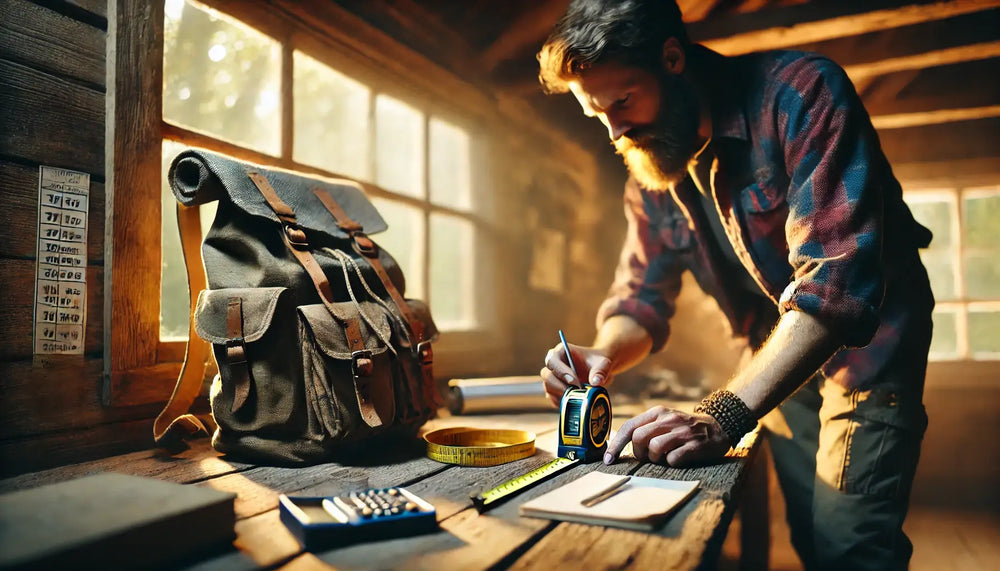
How to Find the Right Size for Your Backpack?
Reading Time: about
When it comes to selecting the perfect backpack, size really does matter. A backpack that’s too large or too small can lead to discomfort, strain on your shoulders and back, and a frustrating lack of organization. Whether you’re using your backpack for daily commuting, weekend getaways, or extended outdoor adventures, understanding how to measure and select the right size is the first step to a pain-free and enjoyable experience.
In this comprehensive guide, we’ll discuss why backpack size is crucial, the difference between dimensions and volume, and share expert tips from reputable sources such as REI Co-op’s Fit Guide and the Mayo Clinic to help you make the best decision possible. We’ll also include transitions throughout each section to ensure a smooth reading experience and link to additional resources for those looking to dive deeper into backpack sizing and fit.
Table of Contents
- Why Backpack Size Matters
- Understanding Backpack Measurements
- Step-by-Step Guide to Measuring Your Backpack
- Backpack Size Categories
- Tips for Choosing the Perfect Backpack Size
- Frequently Asked Questions (FAQ)
- Conclusion
- Additional Resources
Why Backpack Size Matters
Comfort and Health
Transitioning from a basic, poorly-fitted backpack to one that aligns with your torso can be transformative. According to the Mayo Clinic, backpack straps that dig into your shoulders or cause you to hunch forward can contribute to muscle strain and long-term back issues. Selecting a backpack suited to your body dimensions is a key factor in preventing discomfort.
Practical Usage
As John Smith, an outdoor gear instructor with over a decade of hiking experience, points out, “You don’t need a 60L backpack for daily commutes, just like you don’t want a 15L pack for a weekend camping trip.” Whether you’re hauling school books, overnight gear, or travel essentials, the size of your backpack should match the nature and duration of your activities.
Durability and Lifespan
If your pack is consistently overstuffed, seams, zippers, and straps can wear out faster. Jane Cooper, a product specialist at Outdoor Gear Lab, stresses that sticking to the recommended capacity range can help extend the life of your backpack. This is especially important if you invest in a high-quality backpack from brands like Eikenshop, where craftsmanship and materials are designed to stand the test of time.
Now that you understand the importance of backpack size for your health, daily routine, and the longevity of your bag, let’s explore the basics of measuring your backpack.
Understanding Backpack Measurements
Dimensions vs. Volume
-
External Dimensions (Height, Width, Depth)
These measurements help you determine whether a backpack can hold a specific laptop size or fit carry-on requirements set by most airlines.- For instance, airline restrictions usually range around 45 x 35 x 20 cm (or approximately 22" x 14" x 9") for carry-on bags.
-
Internal Volume (Liters)
Most backpack manufacturers list capacity in liters (e.g., 20L, 30L). This tells you how much gear the bag can hold overall. For activities like hiking or travel, liters are often more relevant than external dimensions.
Torso Length and Fit
For technical or hiking backpacks, REI’s Fit Guide highlights torso length as the key measurement for comfort. Jenny Lee, a certified personal trainer, suggests measuring from the bony prominence at the base of your neck (the C7 vertebra) down to the top of your hip bones (the iliac crest). This measurement ensures the backpack’s harness system is aligned with your body, reducing strain on your shoulders and lower back.
Once you know what measurements matter, it’s time to take out the measuring tape and assess your backpack or the one you plan on purchasing.
Step-by-Step Guide to Measuring Your Backpack
1. Gather Your Tools
You’ll need:
- A measuring tape (flexible or retractable)
- A notepad or phone to jot down numbers
- A helper if you need an extra set of hands for accuracy
2. Measure Height, Width, and Depth
- Height: Place the backpack upright on a flat surface. Measure from its bottom seam to the top, but exclude any handle that extends above the main body.
- Width: Find the widest part of the backpack, typically near the main compartment. Lay the measuring tape straight across.
- Depth: From front to back, measure how “thick” the backpack is. If you’ll be carrying bulky items, fill the bag for a realistic measurement.
3. Calculate Volume (If Needed)
To approximate the volume in liters:
- Multiply the height x width x depth (in centimeters) for the backpack’s total cubic volume.
- Divide the result by 1,000 to convert to liters.
For example, a 45 cm x 30 cm x 20 cm backpack totals 27,000 cubic centimeters, or roughly 27 liters. Actual capacity can differ slightly based on the pack’s shape and external pockets.
Backpack Volume Calculator
Enter the dimensions of your backpack (in cm):
With the basics of measurement covered, let’s look at common backpack categories to help you narrow down the best size for different use cases.
Backpack Size Categories
10–20L (Small Daypacks)
- Ideal for: Minimal daily gear—keys, wallet, phone, a small laptop or tablet, a snack.
- Expert Tip: Anna Brooks, a travel blogger at Backpacker Magazine, recommends packs under 20L if you’re only out for half-day tours or lighter city explorations.
20–30L (Medium Day-to-Day Backpacks)
- Ideal for: School, work, or short hiking trips. Comfortable for daily commutes with space for a 13"–15" laptop, a few books, and a water bottle.
- Why It Works: The sweet spot for many people balancing capacity and portability.
30–50L (Weekend & Travel Packs)
- Ideal for: Weekend getaways or overnight stays. Many 35L–40L backpacks also qualify as carry-on friendly if they meet airline dimension rules.
- Pro Insight: Jack Miller, a European tour guide, suggests a 35L pack “to avoid check-in lines and fees while still having enough room for weekend essentials.”
50L+ (Extended Travel & Expeditions)
- Ideal for: Multi-day camping, extended travel, or expeditions where you need ample space for tents, sleeping bags, extra layers, and cooking gear.
- Caution: Carrying more than 20% of your body weight can strain your back, so it’s crucial to test the pack fully loaded.
Now that you have a feel for capacity ranges, here are more tips to refine your choice and ensure you end up with the ideal fit.
Tips for Choosing the Perfect Backpack Size
Consider Your Body Type
- Shorter torsos: Look for backpacks labeled “Short” or “Small” with adjustable harness systems.
- Longer torsos: Opt for “Regular” or “Tall” sizes, or brands that specialize in extended fits.
Match the Bag to Your Activity
- Urban & Work: A streamlined 20L–25L bag with a laptop sleeve and organizational pockets.
- Hiking: Prioritize torso length adjustments, load lifter straps, and comfortable hip belts.
- Travel: Ensure carry-on compliance and easy-access compartments for passports and electronics.
Comfort Check
According to Mayo Clinic, you should test your backpack with a realistic load. Walk, climb stairs, and adjust straps to ensure weight is carried primarily on your hips. Shoulder straps shouldn’t pinch or leave marks on your shoulders.
Frequently Asked Questions (FAQ)
1. How do I measure my torso length for a hiking backpack?
Use a soft measuring tape from the C7 vertebra (the bony bump at the base of your neck) down to the top of your hips (iliac crest). Compare your measurement to the backpack manufacturer’s sizing chart. Check the REI Co-op’s Fit Guide for step-by-step visuals.
2. What if my backpack’s volume (in liters) doesn’t match its listed capacity?
Different brands measure capacity in slightly different ways, and pockets or unusual shapes can alter real-world storage. Use external dimensions if you need an exact fit for airline specifications or large items like laptops.
3. Can I use a 50L+ backpack as a carry-on for flights?
Generally, 50L+ backpacks are too large for most airline carry-on limits. To avoid extra fees or having to check your bag, opt for a 35L–45L pack that meets published dimension limits from sources like IATA Travel Centre.
4. How do I know if my backpack is too heavy?
According to many fitness and outdoor experts, a good rule of thumb is to carry no more than 20% of your body weight for regular activities. If you feel pain or strain, redistribute the weight or remove unnecessary items.
5. Should I prioritize external dimensions or liter capacity?
It depends on your use case. For travel (especially flights), external dimensions are critical. For hiking and camping, internal volume in liters is often more important. Ideally, confirm both when selecting a pack.
6. Is it worth spending more on a high-quality backpack?
Yes. A well-constructed backpack uses durable materials and ergonomics that can last for years, saving you money in the long run. High-quality backpacks also offer better fit adjustments and comfort features.
Conclusion
From your daily commute to extended travels, finding the right backpack size ensures both comfort and practicality. By measuring your torso length, understanding the difference between liters and dimensions, and choosing a backpack designed for your specific activity, you’ll avoid common pitfalls like back pain or wasted space.
Remember: Investing in a properly sized, quality backpack pays off over time, both in terms of personal comfort and the longevity of your bag. A correctly fitted backpack will carry your gear efficiently—without putting undue strain on your body.
Additional Resources
- REI Co-op’s Fit Guide – Detailed visuals and step-by-step instructions on backpack sizing.
- Mayo Clinic Backpack Safety Tips – Health-oriented tips on avoiding common backpack-related injuries.
- Outdoor Gear Lab’s Backpack Buying Advice – Comprehensive comparisons, reviews, and best practices for various outdoor scenarios.
- Backpacker Magazine’s Guide to Packs – Articles and expert insights on everything from daypacks to expedition bags.
Explore Expertly Fitted Backpacks at Eikenshop
Looking for a high-quality backpack that merges timeless style with modern ergonomics? Browse our collection at Eikenshop.com and discover options crafted from premium materials, suitable for everything from your daily commute to international travel. Our designs ensure you look good and feel comfortable—wherever your journey takes you!
Experience vintage aesthetics, trusted craftsmanship, and ergonomic design—only at Eikenshop.





Leave a comment